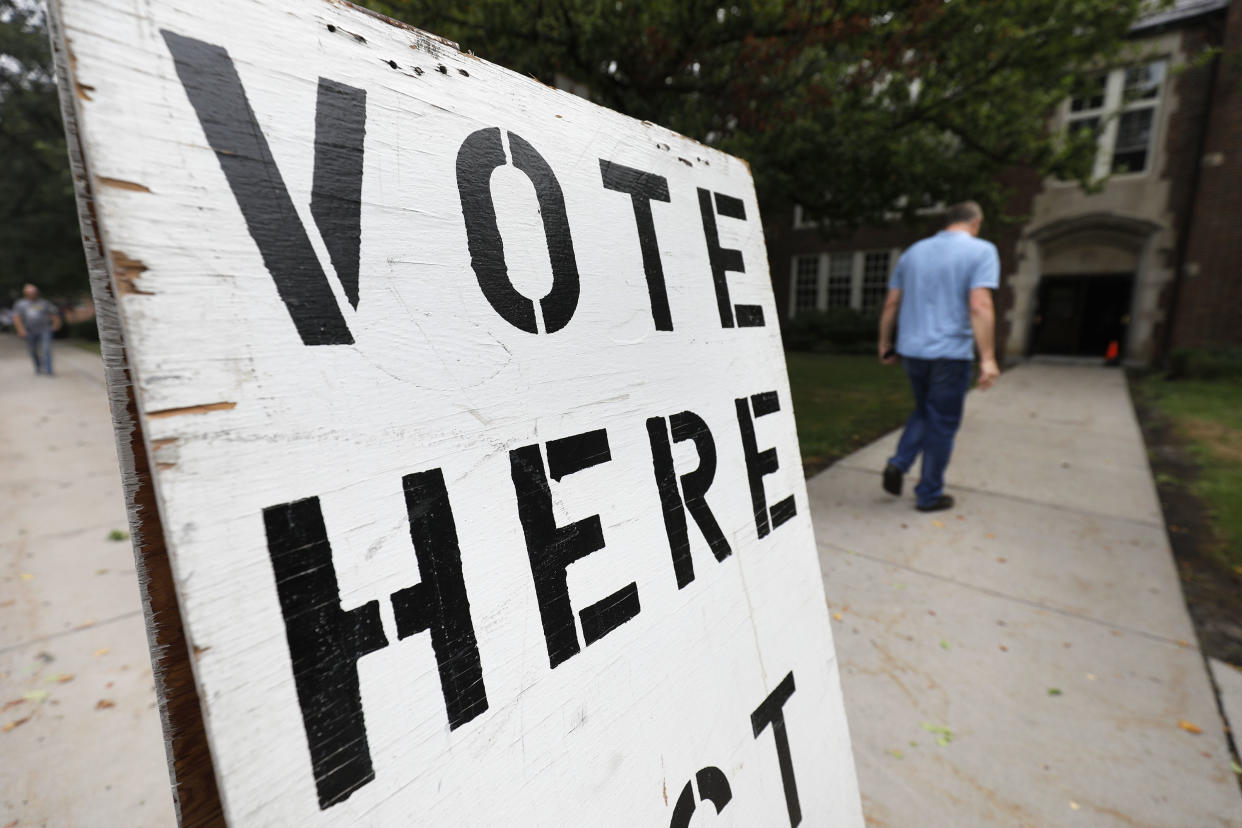Michigan referendum would expand ballot access, countering a trend toward voter suppression

With less than two weeks until the midterm elections, voter suppression is in the news in states from North Dakota (where a new law requiring voters to register with street addresses rather than post office boxes is likely to disenfranchise many Native Americans living on reservations) to Georgia (where the Republican secretary of state, who is also running for governor, has implemented a strict ID match policy that has stricken hundreds of thousands of mostly minority voters from the rolls). In Kansas, whose secretary of state — who helped run the White House’s investigation of nonexistent voter fraud — is also running for governor, the only polling station in a predominantly Hispanic town of 27,000 was shut down. And the long-standing protections for minority voters in the Voting Rights Act were mostly gutted by the 2013 Supreme Court decision in Shelby County v. Holder.
But some states are going in the other direction. Michigan is leading the way with a ballot referendum for an amendment to the state Constitution: Proposal 3, known as Promote the Vote. It would implement automatic voter registration for anyone getting a driver’s license or ID (unless the person choses to opt out), allow same-day registration with proof of residence and make it easier for deployed military personnel to vote. It would also introduce no-excuse absentee voting, allowing residents to mail in a ballot for any reason. And it would restore straight-party-ticket voting, allowing voters to check one box to choose all the candidates from one party, which could increase voting for down-ballot races that attract less attention.
Polling indicates that the proposal is likely to pass. Todd Cook, the campaign director of the Promote the Vote campaign, told Yahoo News that the response in the state has been mostly positive; the main question among voters has been about the security protocols surrounding same-day registration. Proposal 3 has been backed by a wide array of civic organizations.
“A lot of different groups and a lot of different viewpoints have come onboard,” said Cook. “The Detroit Regional Chamber of Commerce is onboard, the Michigan state AFL-CIO, the Police Officers Association of Michigan, just kind of a vast range of different groups and viewpoints have come onboard, so I’m pleasantly surprised. I also think it speaks to the fact that this is a common-sense proposal. I wish I could tell you the things in the proposal are groundbreaking or unique, but everything in this proposal is already happening in some other state around the country.”
The proposal was originally pushed by such groups as the American Civil Liberties Union of Michigan, the League of Women Voters, and the state and local branches of the NAACP. According to the National Conference of State Legislatures, 17 states plus the District of Columbia have same-day registration, and 27 states plus D.C. allow no-excuse absentee voting. Straight-ticket voting is available in only eight states and was eliminated by the Michigan Legislature in 2016.
Another initiative on the ballot in Michigan, Proposal 2, would create an independent commission to draw congressional and state legislative districts. This is an attempt to eliminate partisan gerrymandering by the Legislature, which redraws the lines every 10 years when a new census comes out. The proposal would turn the job over to a commission with members of both major parties and independents charged with establishing “geographically compact and contiguous districts of equal population, reflecting Michigan’s diverse population and communities of interest.”
A half-dozen other states, including California, also have nonpartisan or bipartisan commissions to draw legislative district lines.
Jocelyn Benson, the Democratic candidate for secretary of state in Michigan, supports both measures. She has said that a purge of voter rolls by the outgoing Republican in that position led to Hillary Clinton’s narrow 10,000-vote loss in the state in 2016. Mary Treder Lang, the Republican candidate for secretary of state, opposes the ballot measures as a “progressive power grab that will cost Michigan taxpayers millions of dollars and add more bureaucracy, red tape and government regulations.” But she said she would implement the proposals if they pass.
How likely are the measures to become new constitutional amendments? Enthusiasm for the proposals has been high, beginning with getting them on the ballot. Michigan state law required 315,654 signatures and in July, supporters submitted more than 430,000 signatures for Proposal 3. A poll earlier this month found 72 percent support for expanding voting rights and 19 percent opposing it. The same poll found 55 percent support for the independent redistricting plan.
The process of getting measures on the ballot varies by state, so the path Michigan is taking to expand voting rights would not work everywhere else in the country. There are other ballot initiatives related to voting in play this November, including a Florida amendment that would restore voting rights to felons who have completed their sentence. A recent poll shows the measure leading 65 percent to 28 percent; it requires 60 percent to pass. A Nevada measure that would institute automatic voter registration is also on the ballot, and independent redistricting plans are up for a vote in Colorado and Utah.



